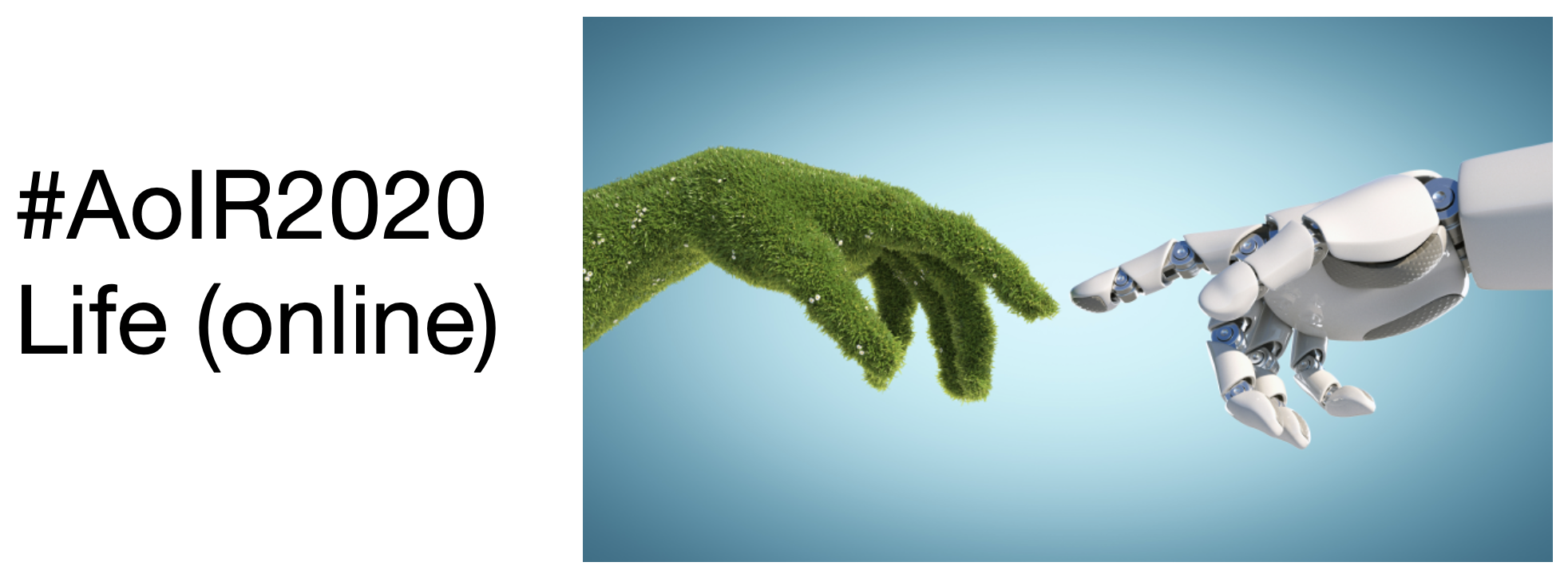THE HIDDEN BLUEPRINT: A DISSECTION OF THE TECHNOLOGICAL FOOTPRINT ON LIVING SYSTEMS
DOI:
https://doi.org/10.5210/spir.v2020i0.11141Keywords:
human migration, digital footprint, algorithms, glitch technology, black boxAbstract
The proliferation of technological systems which permeate, and often dominate, human sociological systems is ripe for critical exploration. The purpose of this panel is to investigate the myriad ways in which technology has encroached upon—and, arguably, engineered—human behaviors, once considered the domain of psychological and biological outcomes. Additionally, this panel will offer critical insight into how disproportionate and otherwise ethically skewed technological influence may be mitigated at the point of creation in order to restore balance between tech consumer and tech creator. Topics in this panel span human migration, algorithmic encoding, human-machine communication, datafication of the human subject, glitch technology, and AI-based prediction. This panel will investigate ways in which technology has converged with human systems, often unquestioned, and offer analysis into the potential consequences of this convergence, as well as potential solutions for alleviating the omnipresence of technical sovereignty on living systems. Specific panel presentations discuss: • The inorganic digital footprint that mitigates the tangible human footprint of human migration. • The pitfalls of cybernetic prediction and the corrosive nature of AI-based prediction. • The nature of human-machine communication, as documented by interactions with Amazon Go. • Normalization of gender, as evidenced by algorithmic determination in Spotify suggestions. • The emancipatory power of “breaking” the black box of participatory technology. Each panel topic identifies technology as the basis for living systems at the socio-cultural level. For example, multiple papers investigate how algorithms seek to manage, mitigate, and encourage human behavior, while others look at the physical technological infrastructure which guides the flow of human migration. The overarching goal of each paper encourages the end-user to take a deeper look at the symbiotic relationship between digital infrastructure and living systems in order to critically examine the consequences of convergence without critical oversight. Each paper in this panel also identifies a humanistic concept that interrogates the blurring between natural and artificial, human and machine, agency, and autonomy. Dissection of the hidden blueprint of techno-socio systems requires scholars to reconsider what it means to be human and forces a critical inquiry about why, how, and under what circumstances machines can or should engineer or augment human actors, and the extent to which machines can be made to act responsibly. For example, as displaced populations are forced from their nation-states, the ethical implications that those migrants of diaspora may tailor their migratory routes to current technological infrastructure must be considered. As we evolve towards engineering more scalable communication networks capable of harnessing the allegiance of a wide swath of the population based on geographic proximity, we mustn’t neglect to consider that these networks are driving human behavior as much, if not more, than they are supporting it. Similarly, when considering the hidden philosophical blueprint that prescribes predictive artificial intelligence, we mustn’t neglect to consider the assumptions which belie this philosophy, nor the impact of systems derived from such philosophy which claim to predict the patterns of our human behavior. These research topics identify the importance and relevance of scholarship in the area of human-machine communication and advocate for their inclusion in the conceptualization, prototyping, and creation of ethical robotic and AI technologies. Increasingly, humans find themselves socializing with intelligent agents and robots at home, in schools, and at work. Further, humans often do recognize the extent to which technological systems drive human behavior. This panel offers a glimpse into the necessary, provocative, and timely discussion about HMC and the role of critical scholarship in shaping technologies of the future. As technology progresses, we find ourselves on the precipice of social and cultural evolution in which the illusory real disguised as “user-friendliness” becomes more and more ubiquitous in design theory. In many respects, the trajectory of the modern-day Internet suggests that rather than heading towards emancipation (what user-friendliness promises)--we are headed closer to invisibility. Each of these panels reveals a mechanism by which we may peek into the constructs of our techno-social reality, as so that we may mitigate the dangers of such invisibility.

